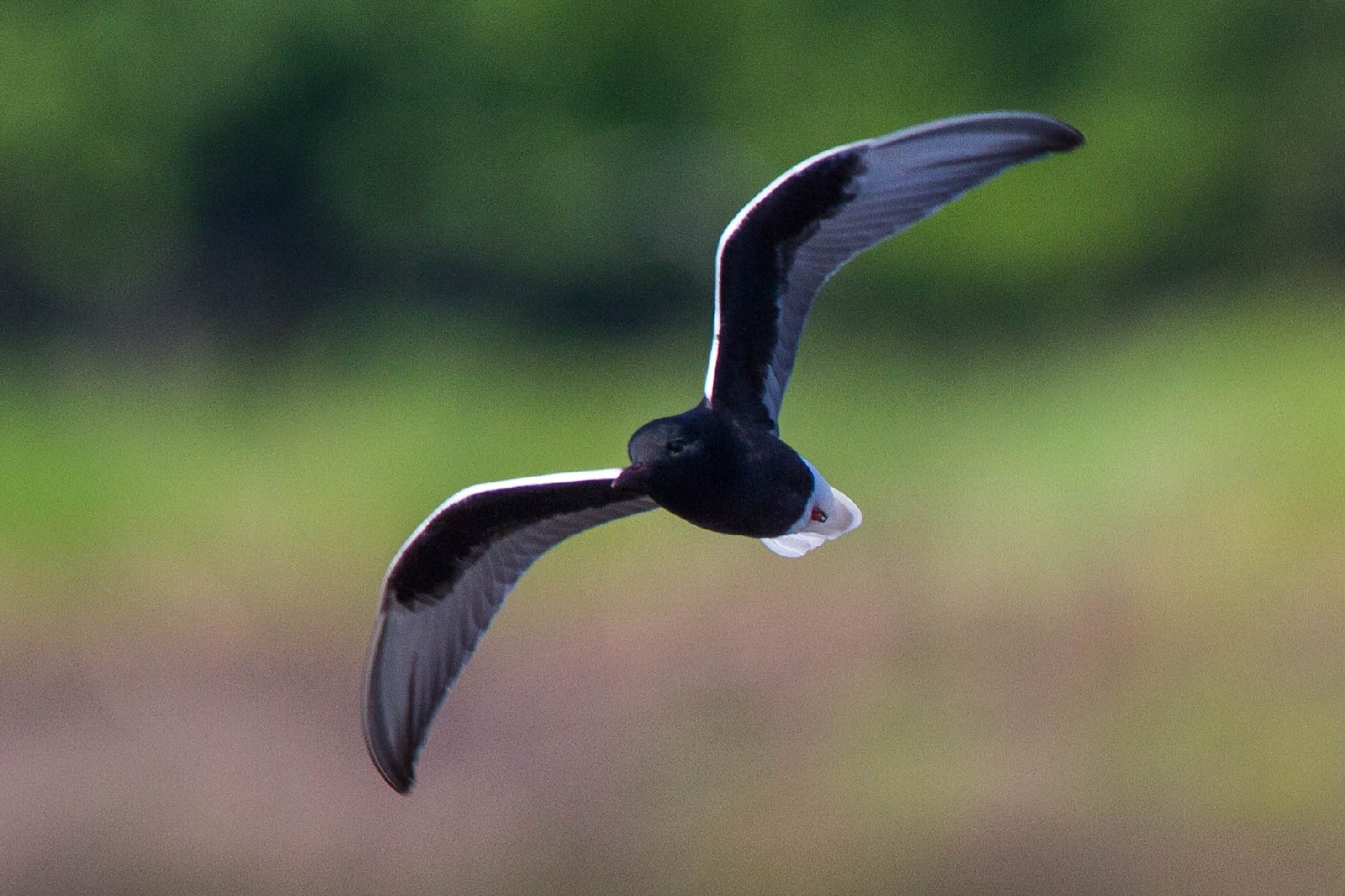White-winged Tern
A species of Marsh terns Scientific name : Chlidonias leucopterus Genus : Marsh terns
White-winged Tern, A species of Marsh terns
Botanical name: Chlidonias leucopterus
Genus: Marsh terns
Content
Description General Info
Description
Adult birds in summer have short red legs and a short black bill (small and stubby, measuring 22–25 mm from the feathers, decidedly shorter than the head), a black neck (often with a pale gray back) and belly, very dark grey back, with a white rump and light grey (almost white) tail, which often looks 'square' in juveniles. The face is tinged yellowish. The wings, as the name implies, are mainly white. The inner wing is grayish with brown-tipped coverts. In non-breeding plumage, most of the black is replaced by white or pale grey, though a few blackish feathers may be retained, admixed with white underparts. A good deal of black shows in the underwing-coverts. The head is black, with a white forehead. The crown is blackish-brown, flecked with white, and the hindcrown is blackish with a certain amount of white flecking. These white markings are pronounced in the winter adult. There is a dark triangular patch forward of the eye. The collar is fairly broad and white. In juveniles and moulting adults, the rump is pale gray, becoming grey in both phases late in the year. The clear white collar and rump isolate the mantle as a dark brown 'saddle'. The mantle feathers have narrow paler brown tips, as have the tertials and scapulars. 
Size
23 cm (9 in)
Nest Placement
Floating
Feeding Habits
White-winged Tern feeds primarily on insects and small fish, captured in flight or from the water's surface. They employ agile flying and dipping techniques and show a preference for foraging around freshwater habitats. They possess a flexible diet that adapts to available prey.
Habitat
White-winged Tern's natural habitats include freshwater marshes, sedge-dominated lakes, and swamps, extending to cultivated rice fields. These birds are adaptable to various environments from boreal to Mediterranean and thrive up to 2000 meters altitude. Preferring open, ephemeral nesting sites, they migrate to diverse landscapes of coasts, rivers, and mangroves from southeastern Europe through Central Asia, wintering in Africa, southern Asia, and Australia.
Dite type
Insectivorous
General Info
Feeding Habits
Bird food type
Behavior
Like the other "marsh" terns (Chlidonias), and unlike the "white" (Sterna) terns, these birds do not dive for fish, but fly slowly over the water to surface-pick items and catch insects in flight. They mainly eat insects and small fish. In flight, the wing-beats are shallow and leisurely. The white-winged tern is one of the species to which the Agreement on the Conservation of African-Eurasian Migratory Waterbirds (AEWA) applies. 
Distribution Area
Their breeding habitat is freshwater marshes across from southeast Europe to Central Asia and the Russian Far East. They usually nest either on floating vegetation in a marsh or on the ground very close to water, laying 2-4 eggs in a nest built of small reed stems and other vegetation. In winter, they migrate to Africa, southern Asia and Australia. It is a scarce vagrant in North America, mainly on the Atlantic coast, but a few records on the Pacific coast and inland in the Great Lakes area. 
Species Status
Not globally threatened.
Scientific Classification
Phylum
Chordates Class
Birds Order
Shorebirds Family
Gulls Genus
Marsh terns Species
White-winged Tern 